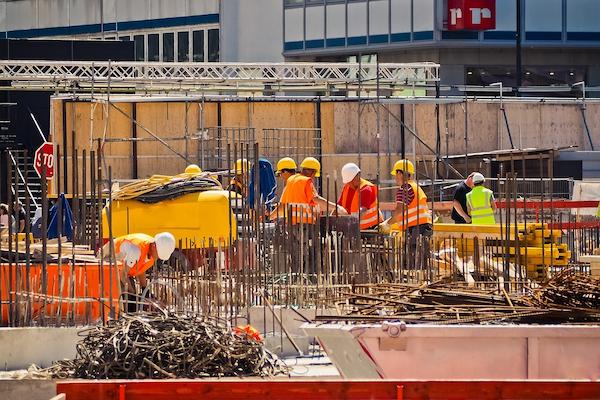
Construction daily reports are quality control records documenting the progress of a construction site. General contractors and project managers use them to ensure the project remains on schedule and within the budget. The reports are shared with the client and other stakeholders.
The information included in daily construction reports typically consists of the project phase, hours worked, a weather report, incidents that may delay the project, and any other pertinent information.
In this article, we will discuss the following:
- What Goes into Construction Daily Reports?
- Are They Necessary?
- Disadvantages of Paper-Based Reports
- A Better Way of Filing and Managing Construction Daily Reports
What Goes into Construction Daily Reports?
Every project is different. There is no standard construction daily report template. It depends on what the construction manager wants to be captured daily. However, there must be consistency in the manner and form. Below are some of the most common elements that go into daily logging:
- Construction daily report template: Project managers will usually have a template to guide the person completing the report. The template is designed to be easy to understand and complete quickly.
- Project information: This information goes at the top of the report. It includes details such as the project name, the client, the address, the report's date, and the author. This information is used for record-keeping and retrieval.
- Weather report: One of the most common delays at a construction site is the weather. For example, concrete cannot be poured over a snow-covered surface. Also, bad weather affects worker efficiency and increases the risk of accidents.
- Task progress: This section of construction daily reports shows the progress of various cost codes, for example, slab, walling, roofing, etc. It usually incorporates photographic evidence.
- Hours worked: This section logs the number of hours worked with a breakdown of the tasks undertaken.
- Materials and equipment used: A record of all the materials and equipment used during the day goes here.
- Potential issues: This section captures any issues of concern – for example, delays by a subcontractor, regulatory inspection issues, and so forth. Photos are included where necessary.
- Safety report: A safety report provides information on safety incidents, risks, and observations. Images are also included. This section is particularly important in the event of future litigation.
Are Construction Daily Reports Necessary?
Despite the role daily construction reports play in ensuring first-time quality, not all project managers use them. In fact, construction managers of small domestic projects rarely ever bother to document what happens daily - but that can leave you open to all sorts of trouble.
If you are still unconvinced, below are four reasons daily construction reports are a necessary quality control measure:
- Improve client relations: Most construction clients do not understand the complexities of a project. Providing them with a daily report creates transparency, demonstrates progress, and helps them understand the process. This goes a long way in building confidence and improving client relations. A happy customer results in word of mouth referrals and a steady flow of customers for a contractor.
- Reduce delays: One of the main reasons for project failure is poor communication and collaboration. Due to the large number of people involved in a construction project, there are bound to be misunderstandings and miscommunication. A construction daily report ensures that everyone is on the same page.
- Time management: Daily construction reports help project managers know whether the project is on track for completion as scheduled or falling behind. If the project is behind schedule, the construction manager can make staffing and process changes to save time and get it back on track.
- Dispute resolution: Documentation is invaluable in the event of a contract dispute with a client or litigation due to a safety incident. Reports can be used to verify hours worked, weather conditions, and material usage and prove the severity of safety incidents. This is why photographic evidence is a critical component of construction daily reports.
If you are serious about quality, FTQ360 has a maturity model that enables you to determine if you have a good quality management program. The maturity assessment only takes 5 minutes.
Disadvantages of Paper-Based Construction Daily Reports
The industry norm has been to file paper-based reports. Ideally, the foreman walks around the site with a clipboard, makes his observations, records them on the construction daily report template, and takes photographs. This is the primary way it has been done since the concept was invented.
Check out FTQ360's Daily Reports:
Unfortunately, there are inherent disadvantages to paper-based reports.
- Time-consuming and prone to errors: A typical daily report takes an hour to complete. The project manager or foreman must recall everything that happened during the day from memory or refer to scribbled notes. This often results in inaccuracies.
- Lack of consistency: If different people complete the report on different days, there are bound to be inconsistencies because everyone has their style. Also, the consideration of whether an issue is pertinent is quite subjective.
- Submission delays: It is not unusual for paper reports to get misplaced, torn, or stained, resulting in delayed submissions.
Best Practices for Construction Daily Reporting
A well-crafted construction daily report does more than document jobsite activity — it safeguards your project timeline, supports legal protection, and improves communication across teams. Here are the most effective best practices to follow when preparing your daily reports:
1. Be Consistent and Timely
Daily reports should be completed at the end of each workday. Delaying entries increases the chances of missing key details. Assign a responsible person on-site who is accountable for timely submissions.
2. Use a Standardized Format
Consistency in format helps project managers and stakeholders scan reports quickly. Whether you're using a construction daily report template or software like FTQ360, ensure that each report includes fields for:
-
Weather conditions
-
Work performed
-
Equipment used
-
Labor hours
-
Subcontractor activity
-
Safety incidents
-
Delays or disruptions
3. Include Objective, Factual Language
Avoid opinions or subjective statements. Stick to verifiable facts like quantities, times, materials used, and weather impact. This is critical in the event your documentation is used in a legal or compliance context.
4. Document Issues Immediately
Capture incidents, delays, and deviations from plan as they happen. Include photo documentation and timestamped notes where possible. This improves transparency and helps support change orders or claims.
5. Use Photos and Annotations
Visual evidence enhances the credibility and clarity of your reports. Annotated images can highlight progress, problems, or conditions not easily captured in words.
6. Leverage Digital Tools
Manual reports are prone to error and difficult to track. Digital tools like FTQ360 streamline reporting with mobile-friendly forms, cloud storage, and automated time-stamping improving both accuracy and accessibility.
Common Mistakes to Avoid in Daily Reports
Even seasoned professionals can fall into these reporting traps. Watch for these common mistakes that reduce the value and reliability of your construction daily reports:
1. Incomplete or Missing Information
Skipping sections like weather, labor hours, or subcontractor activity can leave critical gaps in your documentation. These omissions may raise questions later during disputes or audits.
2. Vague or Subjective Language
Phrases like “some progress made” or “everything went fine” offer no measurable insight. Be specific: “Poured 25 cubic yards of concrete for foundation wall section A” gives stakeholders something concrete to work with.
3. Backdating Reports
Post-dated or “filled in later” reports reduce credibility and may not hold up in court. Always record in real-time or same-day, and ensure timestamps are accurate.
4. Failing to Log Safety Incidents
Even minor safety observations like near-misses should be recorded. This helps identify trends and take proactive steps to improve site safety before an accident occurs.
5. Overreliance on Paper Forms
Paper-based reports can be lost, misfiled, or damaged. More importantly, they don’t offer real-time visibility. Transitioning to digital reporting reduces risks and improves accountability.
How to Improve Construction Daily Reporting
So, how do you eliminate the challenges posed by paper-based reports? The answer lies in technology – a daily reporting app that the foreman can use to log issues in real-time throughout the day and generate an inspection report at the end of the day by simply tapping a button on his mobile device.
FTQ360 is a construction quality management software that's downloadable as a mobile app. It comes with powerful features to help construction managers achieve first-time quality through regular daily inspections and reports. Some of the features at a glance include:
- Hundreds of pre-loaded inspection checklists
- The option to use text or voice-to-text functionality
- Capture and annotate construction site photos
- Consistent reports every time
- Reports are emailed instantly to all stakeholders
- Definitive proof of project compliance
- Built-in safety compliance and risk reduction
- Powerful analytics for insightful performance dashboards and reports
- Reduced Deficiencies through proactive defect reduction functions and tools
For more information on how FTQ360 can help you with construction daily reports, book a demo or start your 30-day free trial today.
Frequently Asked Questions (FAQ)
What is a construction daily report?
A construction daily report is a detailed, day-by-day record of jobsite activity. It typically includes labor and equipment usage, work performed, weather conditions, safety observations, and any issues or delays that occurred. These reports serve as legal documentation and support communication among project stakeholders.
Why are daily reports important in construction?
Daily reports are critical for tracking progress, managing risk, and maintaining accountability on the jobsite. They help identify delays early, improve safety compliance, and provide documented evidence in the event of disputes or claims.
What should be included in a construction daily report?
Key elements of a construction daily report include:
-
Date and project name
-
Weather and site conditions
-
Work completed
-
Labor and subcontractor details
-
Equipment used
-
Safety incidents or observations
-
Photos and notes
-
Delays or issues encountered
Who is responsible for writing daily reports on a construction site?
Typically, a superintendent, foreman, or site manager is responsible for completing daily reports. On larger sites, multiple team members may contribute, especially if digital reporting software is used to streamline data collection.
Is there a standard format for construction daily reports?
While there’s no universal standard, most construction companies use a consistent format or template that includes core data points. Many teams now use construction management software like FTQ360 to automate and standardize daily reporting across projects.
Can construction daily reports be used in legal disputes?
Yes, daily reports are often used as supporting documentation in construction claims, disputes, or litigation. Accurate and timely reports can help verify work completed, establish timelines, and document events that may have impacted the project.
How can I make my daily construction reports more efficient?
To streamline your reporting:
-
Use a digital platform or app
-
Standardize your reporting format
-
Include photos with annotations
-
Fill reports out immediately after work concludes
-
Train your field staff on what details to include

